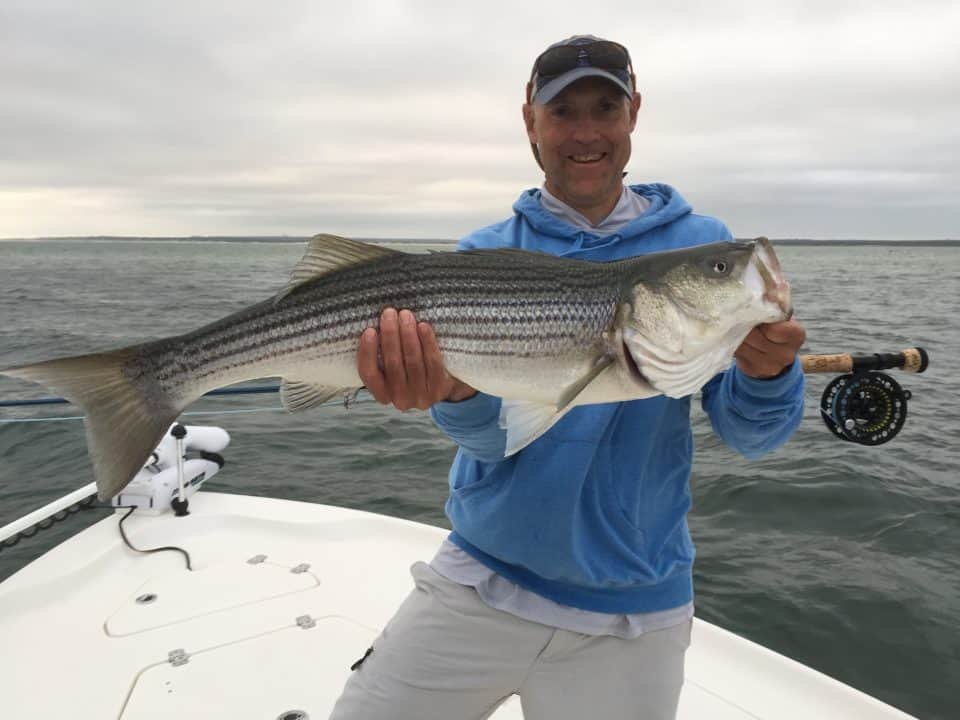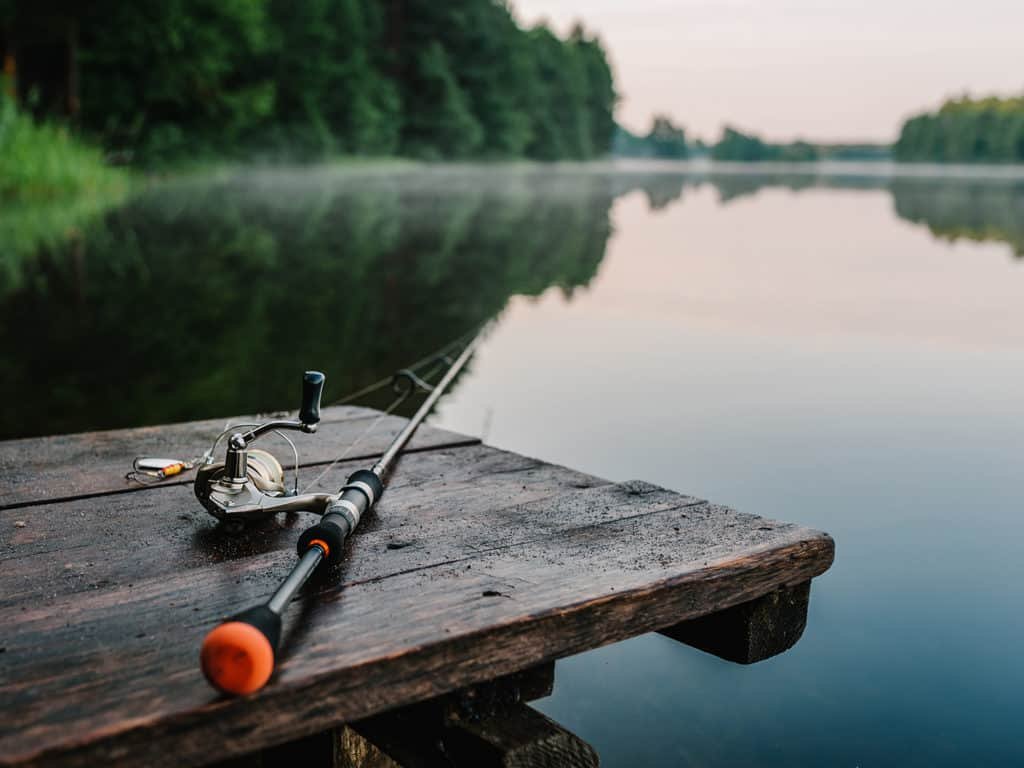From Spring to Winter: How to Match the Hatch and Catch Big Fish All Year Round
Matching the hatch is a fundamental concept in fly fishing that refers to imitating the insects that fish are actively feeding on at any given time. It involves using flies or lures that closely resemble the size, shape, and color of the insects that fish are targeting. By understanding the insects that fish are feeding on and presenting an imitation that closely matches them, anglers can greatly increase their chances of success.
Matching the hatch is important because it allows anglers to present a fly or lure that looks natural and enticing to fish. When fish are actively feeding on a specific insect, they become highly selective and will often ignore flies or lures that do not closely resemble their preferred food source. By matching the hatch, anglers can fool even the most wary fish into biting.
Understanding the Seasons: How Weather Affects Fish Behavior
Weather plays a crucial role in determining fish behavior, and understanding how it affects fish can greatly improve your chances of success on the water. Different seasons bring different weather patterns, which in turn influence fish behavior.
In spring, as the weather warms up, fish become more active and start feeding more aggressively. This is a great time to match the hatch, as insects begin to emerge from their winter slumber. Fish will be looking for nymphs and emergers, so using imitations of these insects can be highly effective.
Summer brings hotter temperatures, which can make fishing more challenging. Fish tend to become more lethargic and seek out cooler water. Adjusting your approach by fishing early or late in the day when temperatures are cooler can increase your chances of success. Topwater lures can also be effective during this time, as fish may be more willing to rise to the surface for an easy meal.
In fall, as temperatures start to cool down again, fish become more active and aggressive in preparation for winter. This is a great time to target big fish, as they are looking to fatten up before the colder months. Using streamers and fishing in deeper water can be effective strategies for catching big fish during this time.
Winter brings cold water and slower fish. Fish metabolism slows down in colder temperatures, making them less active and less likely to chase after fast-moving lures. Adapting to these conditions by using small flies and fishing slow and deep can increase your chances of success.
Spring Fishing: Tips for Matching the Hatch in Warmer Months
Spring is a time of renewal and growth, and it is also a great time for fishing. As the weather warms up, fish become more active and start feeding more aggressively. This is a great time to match the hatch, as insects begin to emerge from their winter slumber.
One of the key challenges of spring fishing is the abundance of insect life. With so many different insects hatching at once, it can be difficult to determine which ones the fish are actively feeding on. One way to overcome this challenge is by using nymphs and emergers. These imitations closely resemble the insects that fish are targeting during this time, and they can be highly effective in fooling even the most selective fish.
Another tip for matching the hatch in spring is to pay attention to the water temperature. As the water warms up, insects become more active and start hatching in larger numbers. By monitoring the water temperature and adjusting your fly selection accordingly, you can increase your chances of success.
Summer Fishing: Adjusting Your Approach for Hotter Weather
Summer brings hotter temperatures, which can make fishing more challenging. Fish tend to become more lethargic and seek out cooler water. Adjusting your approach by fishing early or late in the day when temperatures are cooler can increase your chances of success.
One of the key challenges of summer fishing is the increased activity on the water. With more people out enjoying the warm weather, fish can become more wary and selective. One way to overcome this challenge is by using topwater lures. These lures create a commotion on the surface of the water, attracting the attention of fish and enticing them to strike.
Another tip for summer fishing is to pay attention to the depth at which fish are feeding. As water temperatures rise, fish may seek out cooler, deeper water. By adjusting your fishing depth and using sinking lines or weighted flies, you can target fish at their preferred feeding level.
Fall Fishing: Strategies for Catching Big Fish in Changing Conditions
Fall is a great time to be on the water, as fish become more active and aggressive in preparation for winter. This is a great time to target big fish, as they are looking to fatten up before the colder months.
One of the key challenges of fall fishing is the changing conditions. As temperatures start to cool down, fish behavior can become unpredictable. One way to overcome this challenge is by using streamers. Streamers imitate baitfish and can trigger aggressive strikes from big fish.
Another tip for fall fishing is to pay attention to the water temperature. As temperatures drop, fish may seek out deeper water where temperatures are more stable. By fishing in deeper water and using sinking lines or weighted flies, you can target fish at their preferred feeding level.
Winter Fishing: How to Adapt to Cold Water and Slower Fish
Winter brings cold water and slower fish. Fish metabolism slows down in colder temperatures, making them less active and less likely to chase after fast-moving lures. Adapting to these conditions by using small flies and fishing slow and deep can increase your chances of success.
One of the key challenges of winter fishing is the slower fish activity. With colder water temperatures, fish become less active and less willing to chase after fast-moving lures. One way to overcome this challenge is by using small flies. Small flies closely resemble the insects that fish are targeting during this time, and they can be highly effective in fooling even the most lethargic fish.
Another tip for winter fishing is to pay attention to the water temperature. As temperatures drop, fish metabolism slows down, and they become less active. By fishing slow and deep, you can present your fly or lure at the right depth and speed to entice a strike.
Choosing the Right Bait: Matching the Hatch with Lures and Flies
Choosing the right bait is crucial for matching the hatch and increasing your chances of success on the water. There are many different types of lures and flies available, each designed to imitate a specific insect or baitfish.
When choosing a fly or lure, it is important to consider the size, shape, and color of the insects or baitfish that fish are actively feeding on. Matching these characteristics as closely as possible will greatly increase your chances of fooling fish into biting.
For dry fly fishing, imitations of adult insects that float on the surface of the water are used. These flies are designed to mimic the size, shape, and color of the insects they imitate. Dry flies are typically made with buoyant materials such as feathers or foam, allowing them to float on the surface of the water.
For nymph fishing, imitations of immature insects that live underwater are used. These flies are designed to sink below the surface of the water and imitate the movement of nymphs as they drift in the current. Nymphs are typically made with weighted materials such as lead wire or tungsten beads, allowing them to sink quickly.
For streamer fishing, imitations of baitfish or other small prey items are used. These flies are typically larger and more colorful than dry flies or nymphs, and they are designed to imitate the movement of a wounded or fleeing baitfish. Streamers are typically made with materials such as feathers, fur, or synthetic fibers, allowing them to move and undulate in the water.
Reading the Water: Finding the Best Spots to Fish Year-Round
Reading the water is an essential skill for finding the best spots to fish year-round. By understanding the different types of water and where fish are likely to be found in each season, anglers can greatly increase their chances of success.
In rivers and streams, fish are often found in areas of slower current or behind obstructions such as rocks or fallen trees. These areas provide fish with shelter from the current and make it easier for them to ambush prey. By targeting these areas, anglers can increase their chances of finding fish.
In lakes and ponds, fish are often found near structure such as weed beds, submerged logs, or drop-offs. These areas provide fish with cover and make it easier for them to find food. By targeting these areas, anglers can increase their chances of finding fish.
In saltwater, fish are often found near structure such as jetties, piers, or mangroves. These areas provide fish with cover and make it easier for them to find food. By targeting these areas, anglers can increase their chances of finding fish.
Gear and Equipment: What You Need for Successful Fishing in Any Season
Having the right gear and equipment is crucial for successful fishing in any season. There are many different types of rods, reels, lines, and other equipment available, each designed for specific fishing conditions.
When choosing a rod, it is important to consider the type of fishing you will be doing and the species of fish you will be targeting. For smaller fish or delicate presentations, a lighter weight rod may be more appropriate. For larger fish or heavy-duty applications, a heavier weight rod may be necessary.
When choosing a reel, it is important to consider the size and weight of the rod, as well as the type of fishing you will be doing. For lighter weight rods, a smaller reel may be more appropriate. For heavier weight rods or saltwater applications, a larger reel with a strong drag system may be necessary.
When choosing a line, it is important to consider the type of fishing you will be doing and the species of fish you will be targeting. For dry fly fishing or delicate presentations, a floating line may be more appropriate. For nymph fishing or streamer fishing, a sinking line or sink-tip line may be necessary.
Other equipment such as leaders, tippet material, and accessories such as fly boxes, nippers, and forceps are also important for successful fishing. It is important to have the right equipment for the type of fishing you will be doing and to take care of your gear to ensure its longevity.
Fishing Ethics: How to Respect the Environment and Preserve Fish Populations
Fishing ethics are an important aspect of being an angler. It is important to respect the environment and preserve fish populations for future generations to enjoy.
One of the key principles of fishing ethics is catch-and-release. Catch-and-release practices involve releasing fish unharmed back into the water after they have been caught. This allows fish to reproduce and maintain healthy populations.
When practicing catch-and-release, it is important to handle fish with care. Wetting your hands before handling fish can help protect their delicate skin and scales. Using barbless hooks can also make it easier to release fish quickly and minimize injury.
It is also important to follow local regulations and guidelines when fishing. These regulations are put in place to protect fish populations and ensure sustainable fishing practices. By following these regulations, anglers can help preserve fish populations for future generations.
Taking Your Fishing Skills to the Next Level with Hatch-Matching Techniques
Matching the hatch is a fundamental concept in fly fishing that can greatly increase your chances of success on the water. By understanding the insects that fish are feeding on and presenting an imitation that closely matches them, anglers can fool even the most wary fish into biting.
Understanding how weather affects fish behavior and adjusting your approach accordingly can also greatly improve your chances of success. Different seasons bring different weather patterns, which in turn influence fish behavior. By adapting to these changing conditions, anglers can increase their chances of finding and catching fish.
Choosing the right bait, reading the water, and having the right gear and equipment are also crucial for successful fishing. By selecting the right bait for matching the hatch, targeting the right areas of water, and using the right gear and equipment, anglers can greatly increase their chances of success.
Finally, practicing fishing ethics is important for respecting the environment and preserving fish populations. By practicing catch-and-release and following local regulations and guidelines, anglers can help ensure sustainable fishing practices and preserve fish populations for future generations.
By incorporating these hatch-matching techniques into your fishing repertoire, you can take your fishing skills to the next level and increase your chances of success on the water. So get out there, match the hatch, and enjoy the thrill of fooling fish into biting!
Originally posted 2024-01-12 11:25:34.





